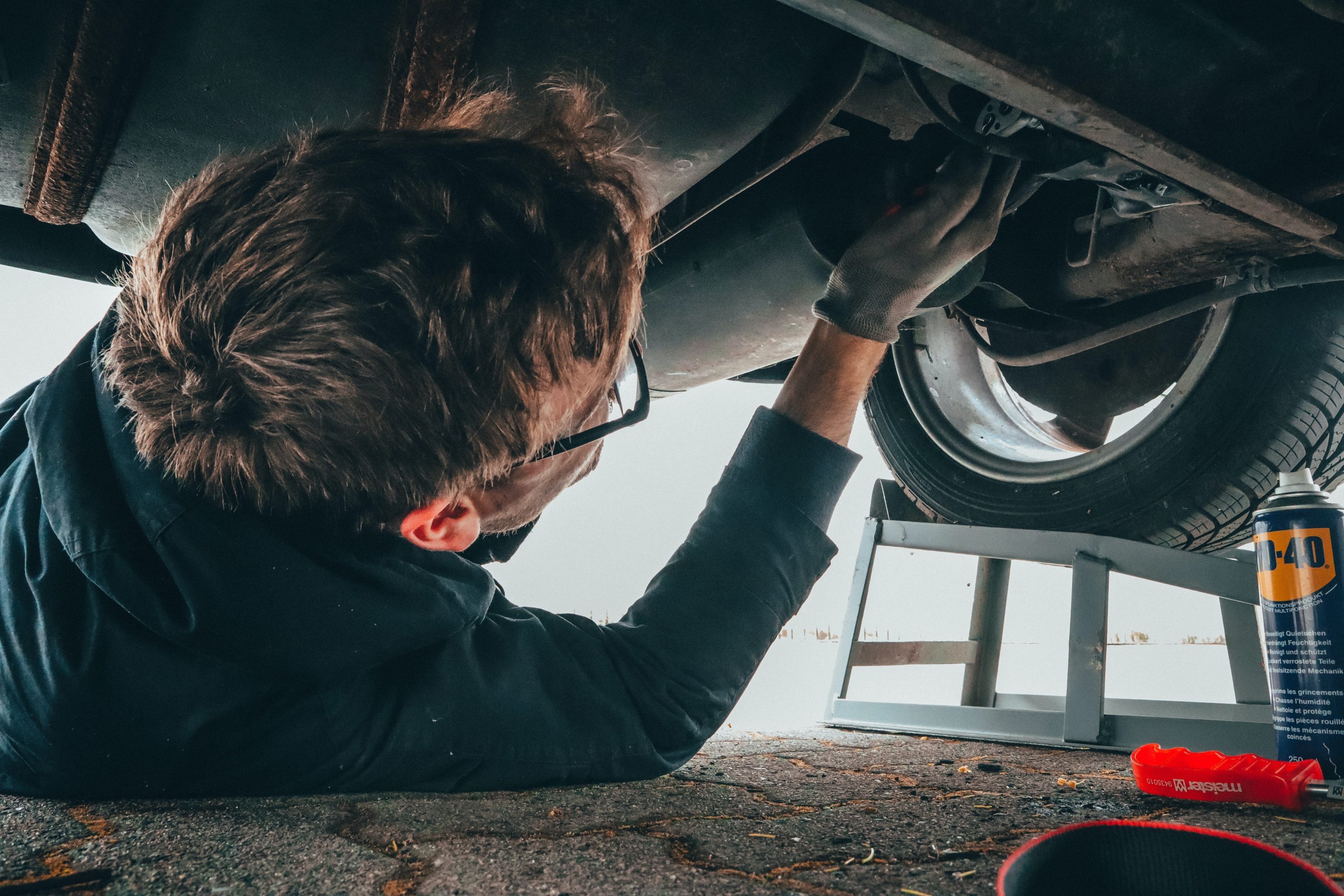
The pressure is mounting on manufacturers across the globe to give customers the right to repair their own devices – and America is no exception.
But what exactly is the right to repair movement?
In short, right to repair is exactly as the name suggests: people have the right to repair something they own (including vehicles) themselves or take it to the technician of their choice. And, while Americans are legally allowed to repair what they want, people are often denied the information or parts required – which is making it increasingly more difficult for them to do themselves, and is also where the right to repair movement comes in.
Right to repair activists basically want these four things:
• Making information available, like access to manuals
• Making parts and tools available to third parties, including individuals
• The legalizing of unlocking, adapting, or modifying a device, so the owner can install custom software
• Products should be designed in such a way that makes repairing them possible
Those in favor of the movement argue that making this information and parts available will prevent products, such as cars ending up on the scrap heap quite so easily.
As it stands, most carmakers across the USA – even though it’s not actually law in 49 states – have agreed to provide diagnostic and repair information to owners and independent repair facilities for any car made in 2015 or later.
It’s the part about making digital and software information that is being challenged, with the Alliance for Automotive Innovation, which represents General Motors, Fiat Chrysler, and other care makers, arguing that opening up data could lead to serious cyber security risks.
The history of the right to repair law
Right to repair isn’t such a new concept, with the movement stemming back as far as the 1950s. Fast forward to 2001, it was first considered at federal level. In July 2012, Massachusetts passed the Motor Vehicle Owners’ Right To Repair, requiring manufacturers to provide the necessary documents and information necessary to allow residents the right to repair their car wherever they wanted.
And while the bill wasn’t passed federally, trade organizations including the Automotive Aftermarket Industry Association, Coalition for Auto Repair Equality, and Alliance of Automobile Manufacturers agreed it would meet the requirement across all 50 states.
Legalities surrounding warranty
Despite the right to repair movement, manufacturers will still offer warranties and a lot of customers are likely to continue to take advantage of this service.
It’s worth noting that while it is technically illegal to void a product’s warranty simply because it receives an ‘unauthorized repair, a lot of manufacturers will inform customers upon purchase that if they tamper with their products then it will automatically impact their warranty.
So the question remains, how could right to repair impact your service department?
Putting the customer in control
Although the right to repair movement impacts anything involving a chip, it seems that the only industry to really be impacted by it so far, is the automotive industry. And car dealerships are among those who have been hit by the changes – especially service departments.
Think about it, the right to repair movement hands control over to the customer, allowing them to get the car they just purchased from your dealership serviced or repaired by an independent mechanic of their choice (if they want to, of course).
Increase in competition within the repair industry
We all know how important it is to get your voice heard when it comes to promoting your sales department but the right to repair movement will mean you need to work on promoting your service department too.
Unfortunately, dealerships will no longer be able to take for granted that customers are likely to return to your business for any service and repair work. And not only will you be competing with fellow dealerships and mechanics for the work, but you’ll be competing with customers who feel they can do the job themselves too, making it even more important for you to get your service department on the map.
With that in mind, now is the time to look at your marketing strategy and explore ways that promote your service department. Consider looking at offering discounts or deals to returning customers who bring their car back to your dealership for work.
It’s worth noting that word of mouth is still one of the most efficient and effective forms of marketing, which means encouraging customers to leave positive testimonials is priceless. The SnapCell app enhances communication with customers – including after the purchase of a car – by sending them targeted messages, with a direct link to your dealership’s testimonial page. Better still, positive reviews help boost you up the rankings on Google, putting you in the driving seat when it comes to customers searching for local service and repair departments.
Chance to showcase your service department
Why don’t we look at this as an opportunity to showcase your service department?
With the sales team generally being customer-facing, it’s the repair staff who are so often the ‘unsung heroes’ of any car dealership, despite them playing such a vital role within the business. In fact, according to recent statistics, 44 percent of a dealership’s profits come from its service and parts department.
Perhaps it’s time for you to showcase the work they do? After all, you want to be putting your dealership at the top of anyone’s list, when they’re considering repair work on their vehicle.
Ultimately, you want people to choose your service department. So, coming to your service team and picking the professionals needs to be the easiest, most convenient, time, and cost-effective option for anyone needing work done.
Thanks to the SnapCell app, it’s never been easier for professionals in the auto industry to showcase their employees. Staff from repair centers of any size can seamlessly record videos, with the simple click of a button, showcasing the talent and expertise of their service department. Whether it’s a ‘meet the team’ piece, or your mechanic showcasing their expertise via a ‘how-to’ clip, there are plenty of ways that you can highlight their talents.
Better still, SnapCell customers can reach a wider audience, with the app helping dealerships to promote their work on both a local and national level. Plus, SnapCell seamlessly integrates with a dealership’s social networks, which means you can push out professional-looking (but easily created) videos of your service department across a variety of platforms, which in turn increases the chances of you reaching a wider audience via multiple touchpoints.
A win for independent dealerships
Admittedly, the right to repair movement could be seen as a win for independent dealerships. Simply put, if you’re an independent dealership, this is your chance to jump on business, that would have previously automatically gone to the big brands. In short, this could open up the door for extra business that they didn’t necessarily get before.
And remember, a lot of customers like being loyal to local businesses, so take advantage of this.
Extra training for your service department
Of course, with potential new business coming your way, it might be that you need to consider investing in training for your service department. If there’s the possibility that your team will be working on cars that they’re not familiar with, then now is your time to get them trained.
Not only do you want to be able to promote your service department as experts, but you want to make sure when they’re doing the job, they’re doing it efficiently. After all, if a customer receives a positive customer experience from your dealership then they’re more likely to return for business in the future. Likewise, if your mechanics do a bad job, it could harm your reputation.
Also, with competition between service departments potentially rising, this could be an opportunity for you to re-visit your prices. Your price list needs to be competitive, but also reflect the skill of your team.
The need to manage parts
One of the main factors driving the right to repair movement is the hope that less cars will be scrapped, which means there’s a chance we’ll be seeing more repaired old cars on our roads. This means that it’s highly likely that your service department could be asked to work with old vehicle parts, as well as new. Luckily, SnapCell customers can easily manage their inventory – including the oversight of overage stock – so your dealership can keep an efficient eye on the parts they have, putting them in the driving seat when it comes to customers looking for the ideal mechanic to service their car.
DIY customer repairs could prove risky
If more customers are having a go at repairing cars themselves – or repair professionals who aren’t as experienced or qualified – then it could lead to your dealership’s service department having to pick up any faults or errors. Your service and repair department needs to be prepared for this.
What’s more, it’s worth noting that mechanics don’t always like working on jobs that have been tampered with by non-professionals – in other words, customers. This needs to be considered when you’re creating your future business strategies surrounding your service department.
Let SnapCell support you through change
With the right to repair movement having such a huge impact on the auto industry, it’s essential that dealerships are prepared for such change. The SnapCell app gives you and your employees a revolutionary tool that will help ensure your dealership can quickly adapt to any challenges that might occur.
Designed by industry experts and created especially for those in the motor industry, SnapCell is the go-to software for all automotive technicians. Schedule a free demo today.



